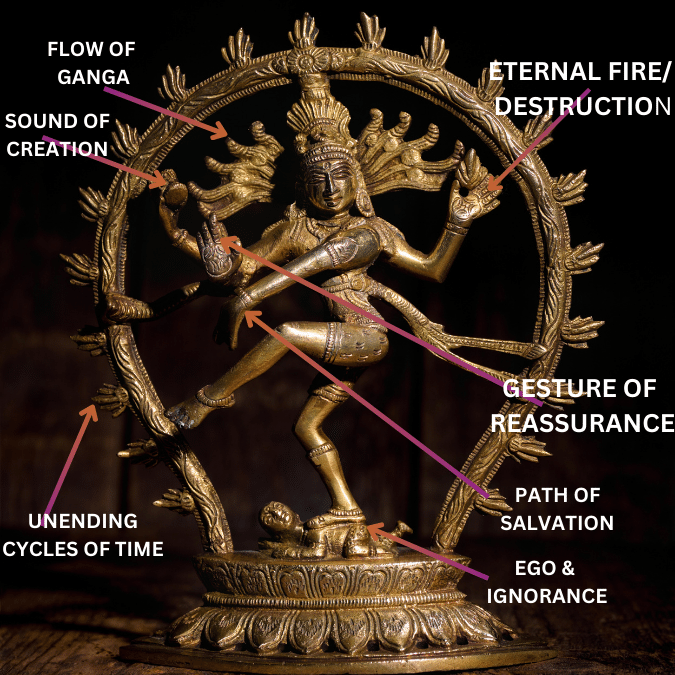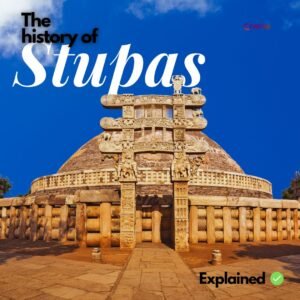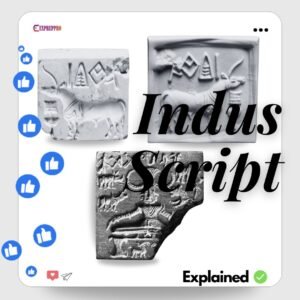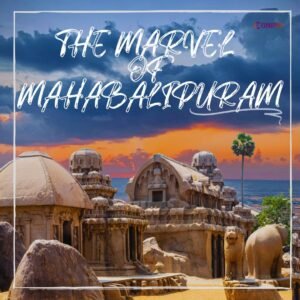
The Cholas created many idols and sculptures of gods and deities to adorn the temples, which have many inner meanings and artistic values. Among the magnificent bronze images created by the Cholas, Nataraja’s( literally Dance-king) sculpture or cosmic dance of Lord Siva is the most important one. The Nataraja symbolises the cycle of creation and destruction of the universe. It received artistic appreciation and is still considered a marvel created in metal.
CHOLAS- A BRIEF INTRODUCTION
The Cholas were an important dynasty that ruled south India from AD 850 to AD 1250. It was Vijayalaya, a feudatory of the Pallavas of kanchi, founded the imperial Chola dynasty. Under Rajaraja Chola’s and Rajendra Chola’s rule, the empire expanded to southeast Asia. Due to their powerful navy, the Bay of Bengal turned into a Chola lake. Apart from their territorial success, the Chola period constitutes the most creative period of Indian history. They equally encouraged temple construction, literature and innovations in bronze sculpture casting.
WHAT IS LOST-WAX TECHNIQUE?
Casting metal sculpture is an age-old practice. The lost-wax bronze casting method, known as cire perdue, is a proven and most commonly used process to cast sculptures.
To create a bronze sculpture, we need to follow the steps mentioned below.
- First, the image is modelled in wax.
- The model is then entirely covered with clay, and a small outlet is kept to remove the molten wax.
- The clay-covered model is heated to remove the molten wax.
- The molten bronze metal is poured into the hollow clay mould.
- The sculpture is removed by breaking the mould. Then, finishing touches are given to the sculpture.
WHAT ARE THE DIFFERENCES BETWEEN THE METAL SCULPTURES IN NORTH INDIA AND SOUTH INDIA?
In North India, sculptures are made from an alloy of eight metals. Gold, Lead, Silver, Tin, Iron, Mercury, Zinc and Copper are metals.
Only five metals are used in South India: copper, Silver, Lead, Mercury, Zinc, and Copper.
In North India, sculptures tend to be hollow, but in South, they are solid.
THE HISTORY OF CHOLA NATARAJA SCULPTURE
Although the earliest known Nataraja sculpture is located at Aihole Ravana Phadi cave, constructed by Chalykya kings, the famous and artistically superior Nataraja sculpture was created in the Chola period.
During the Chola period, the dancing lord Siva was known by different names, like
- Arbudha kuttar or Wonderous dance
- Kuttadum Devar or Dancing lord
- Adavallan meaning Expert dancer
- Kuttu Perumal or Greate lord of dance
For example, the inscription of Parantaka Chola states that” In the 38th year of Parantaka Chola (944), a trader or vyapari gifted a lamp and goats to provide gee in front of Kuttu Perumal in the temple at Tirunavalar“.
The dance of lord Siva is also referred to as “deshi“. The Tiruvenkadu inscription from the Tiruvenkadu temple provides this information. Here, the dance is called deshi(Tamil) or local. Later, the name “Ananda Tandava” became popular.
In the 13th century, the name Nataraja was introduced to Tamil territory by the Pandya rulers in their inscriptions.
According to the literary evidence, lord Siva’s Ananda Tandava first appeared in the Pallava period.
The Chola Queen Sembiyan Mahadevi popularised the dancing form of Lord Shiva in the Chola country. During the Chola period, around 3000 bronze sculptures of Nataraja were made for temple worship. The Nataraja sculpture was placed in the “natana-sabha“ of the temples.
THE HIDDEN MEANING OF CHOLA NATARAJA SCULPTURE

There are two types of Nataraja sculptures:
- Angry from
- Pacific form
The upper left hand holds the eternal fire in a bowl. The fire indicates the destruction, which is a counterpart of creation.
The upper right hand hold the “damaru” or drum. The drum indicates the sound of creation.
Lord Siva’s lower left hand points toward the upraised foot. It indicates the path of salvation.
The lower right hand shows the gesture of “Abhya Mudra“. It is a gesture of reassurance.
The lord Siva stands on his right leg, and the right leg is placed over a dwarf called “Muyalaka“. The dwarf indicates ego, ignorance and arrogance.
The left leg is raised and placed across the right leg. (In Pandya-style Nataraja sculpture, the right leg is raised instead of the left leg).
The Chola-style Nataraj sculpture is created in “Ardhanarishwara ” form. It is evident from the ornaments. In one ear, Nataraja wears a male earring, and in the other ear, a female type of earring.
The twisted snake in the arm represents the Kundalini power that resides in the spine of Humans.
The flowing locks of Lord Siva indicate the flow of the river Ganga. In some rare statues, the river Ganga is absent, but it is present in almost all sculptures. Ganga is absent in the Nataraja sculpture of Shivapuram.
All bronze Nataraja sculptures were framed by aureoles. The aureoles are cast in three pieces: two pillars and an inverted U-shaped top. It symbolises the unending cycles of time.

Some adjustments were made to the lifted leg and hands to fit the statue inside the frame of the aureoles, making the aureoles look oval in shape.
(In the Pallava Nataraja sculpture, the aureole was elliptical)
The outstretched hand carrying damaru, or the drum, was extended further.
In some sculptures, the oval shape opens up further, resulting in a circular form.
The aureole frame supports the Ganga and the sculpture.
Example: Nataraja sculpture, CA 970, Asia Society Museum, New York (oval-shaped aureole).
Nataraja sculpture, 11th century, Dallas Museum of Art (circular form aureole).



